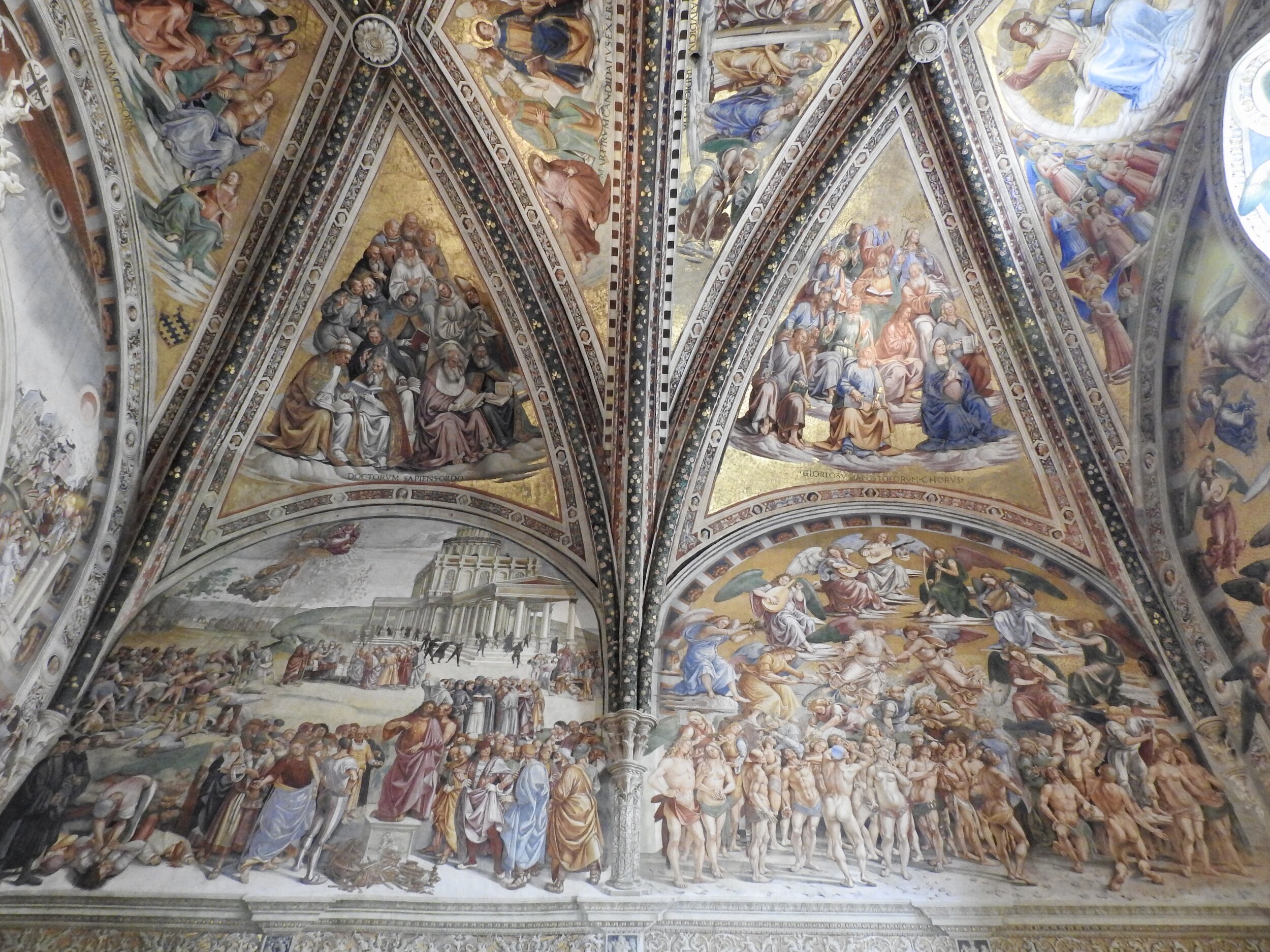
View of the vaulted ceiling and east wall of Cappella Nuova (New Chapel), also known as the Cappella di San Brizio (San Brizio Chapel), in Orvieto Cathedral. The chapel’s structure was erected between 1408 and 1444, but the decoration was not completed until the following century. Fra Angelico and Benozzo Gozzoli began the frescos in 1447, but only completed two panels in the vault—Christ in Judgement and Angles and Prophets—before being called away by the Pope for another commission. The chapel languished until 1499, when Luca Signorelli and his workshop took up the commission, eventually completing their work in 1503. Photo by Renée DeVoe Mertz.
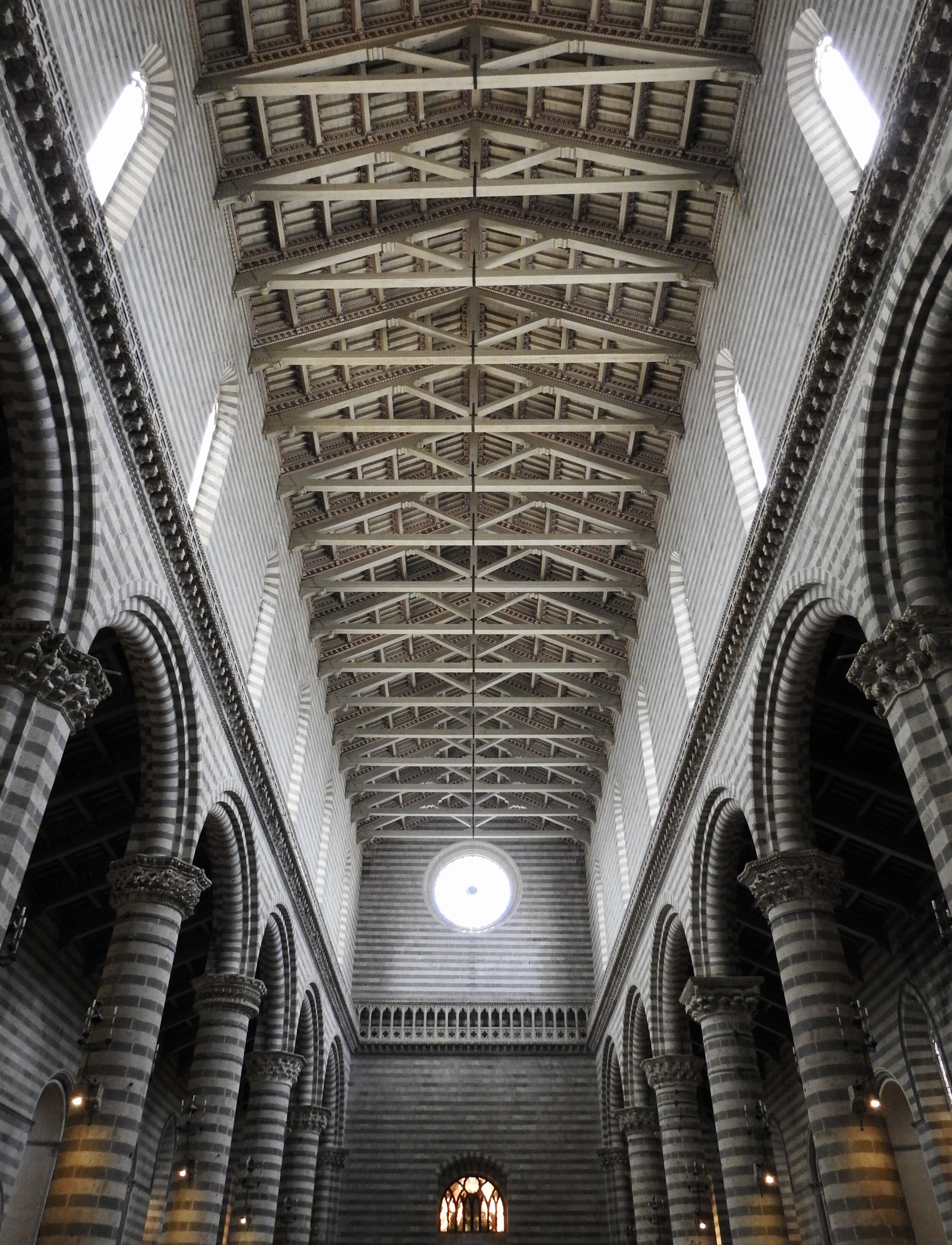
Orvieto Cathedral’s spacious Gothic nave (c. 1290–1308), with its stark yet rhythmically striped decor, contrasts dramatically with the small and riotously painted Cappella di San Brizio. Photo by Renée DeVoe Mertz.
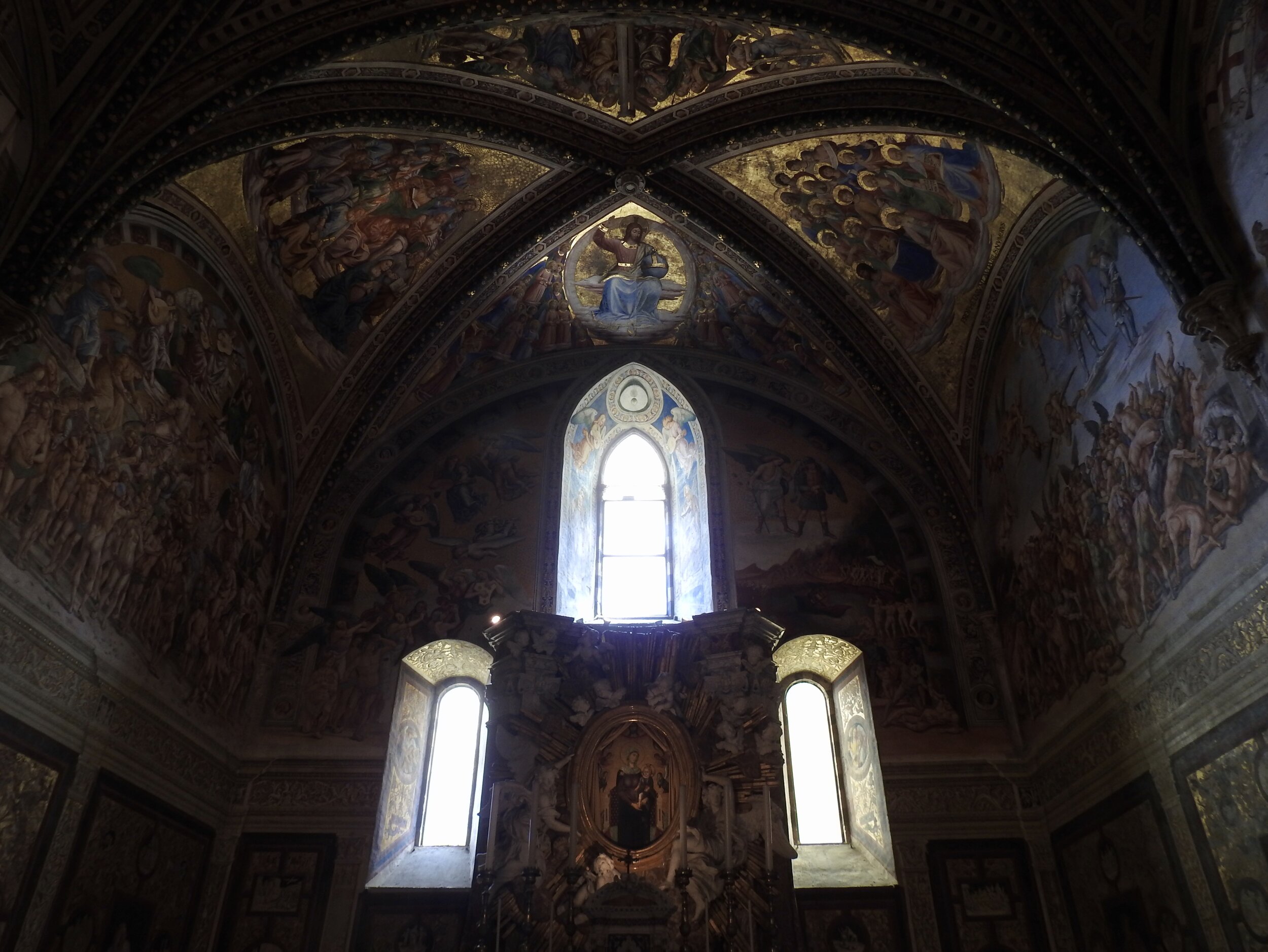
View into Cappella di San Brizio, Orvieto Cathedral. Photo by Renée DeVoe Mertz.
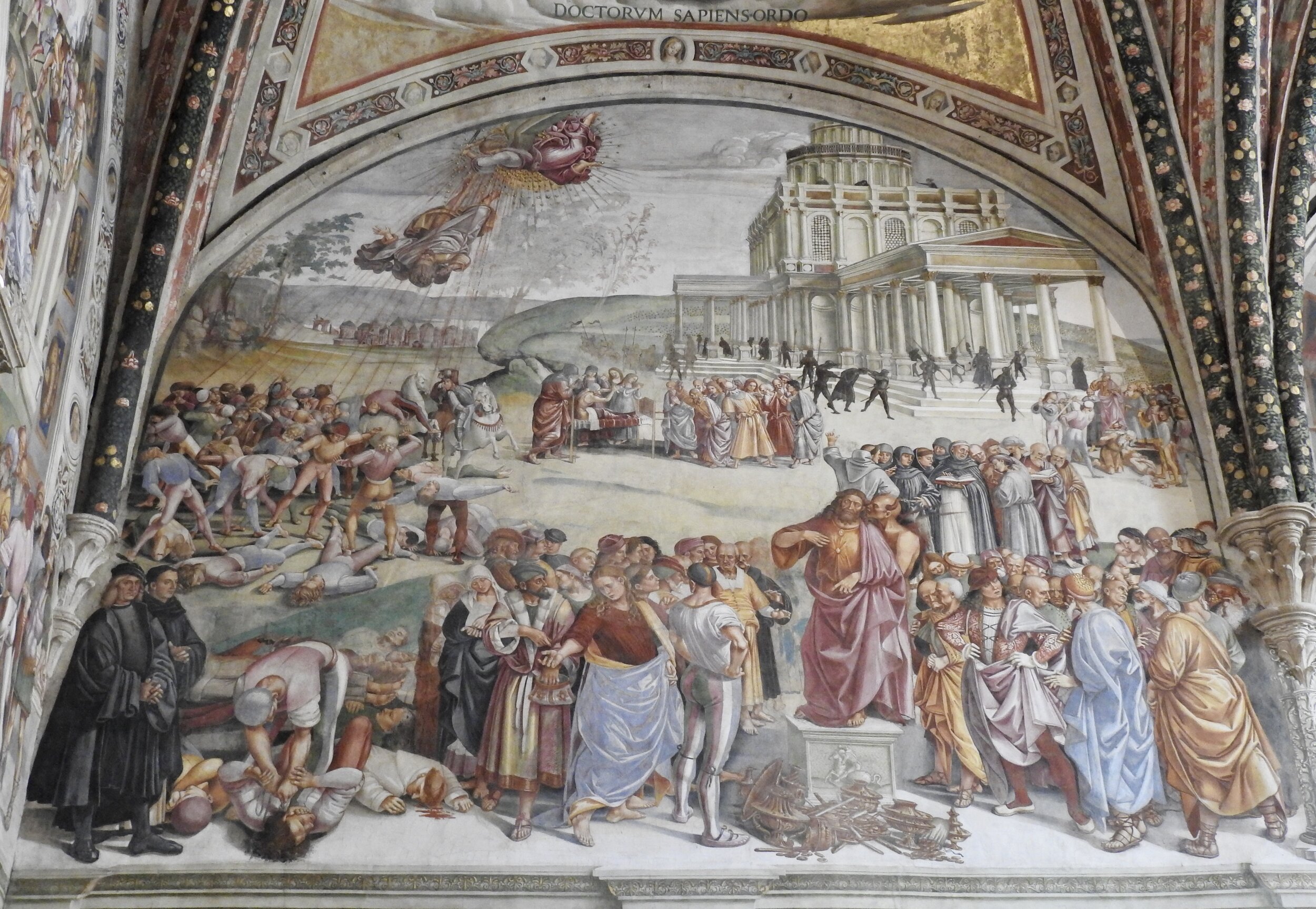
Luca Signorelli’s fresco, The Preaching of the Antichrist (c. 1500–03) in Cappella di San Brizio. Signorelli included portraits of himself and Fra Angelico—whose plans he used to complete the frescos in the chapel’s vault—at the far left of the painting: both men are clad in black, with Signorelli in front, dressed as a nobleman and looking out at the viewer. Fra Angelico appears in his Dominican habit slightly behind the younger man. Photo by Renée DeVoe Mertz.
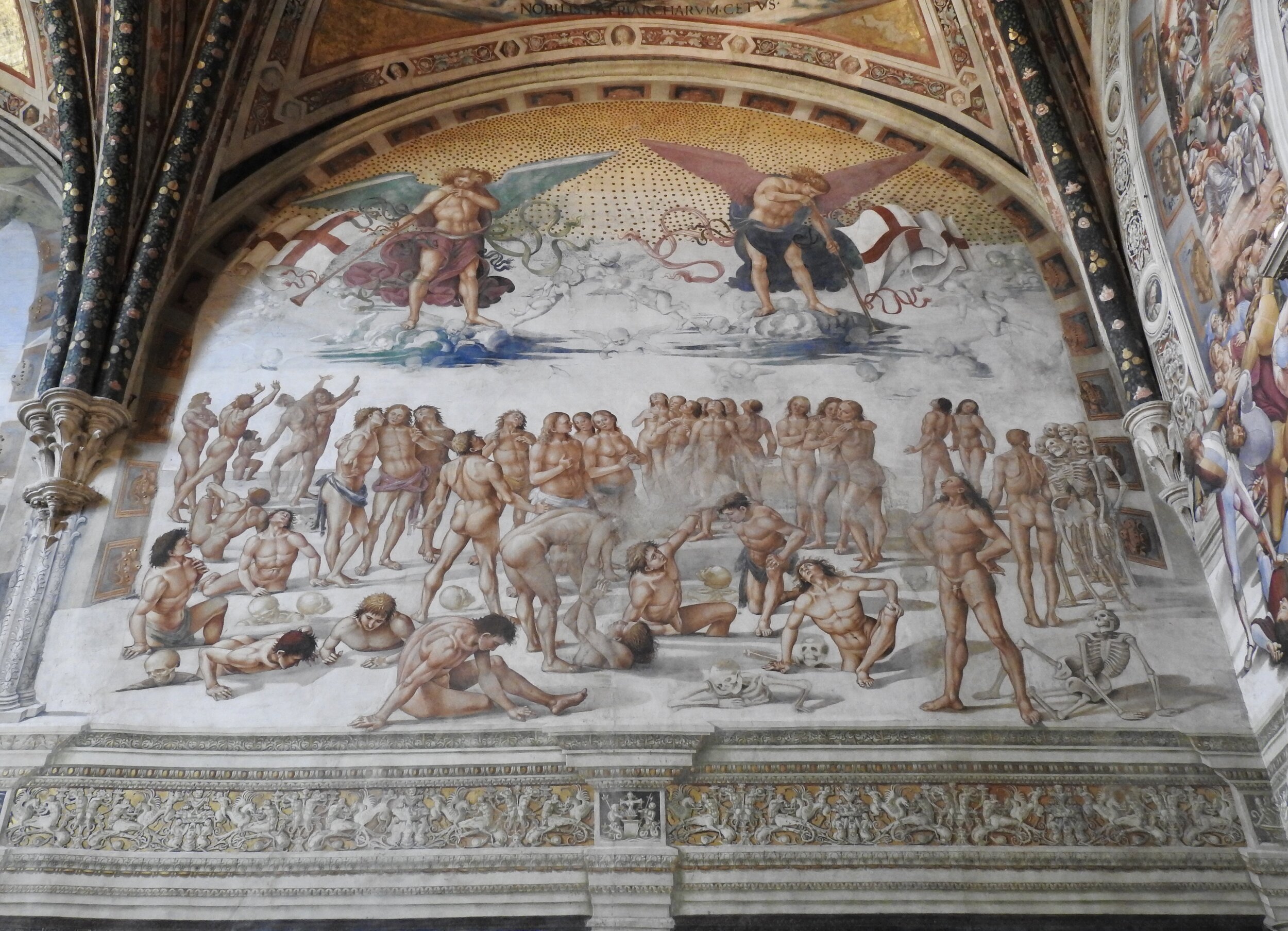
Luca Signorelli’s Resurrection of the Flesh (c. 1500–1503) in Cappella di San Brizio. Photo by Renée DeVoe Mertz.
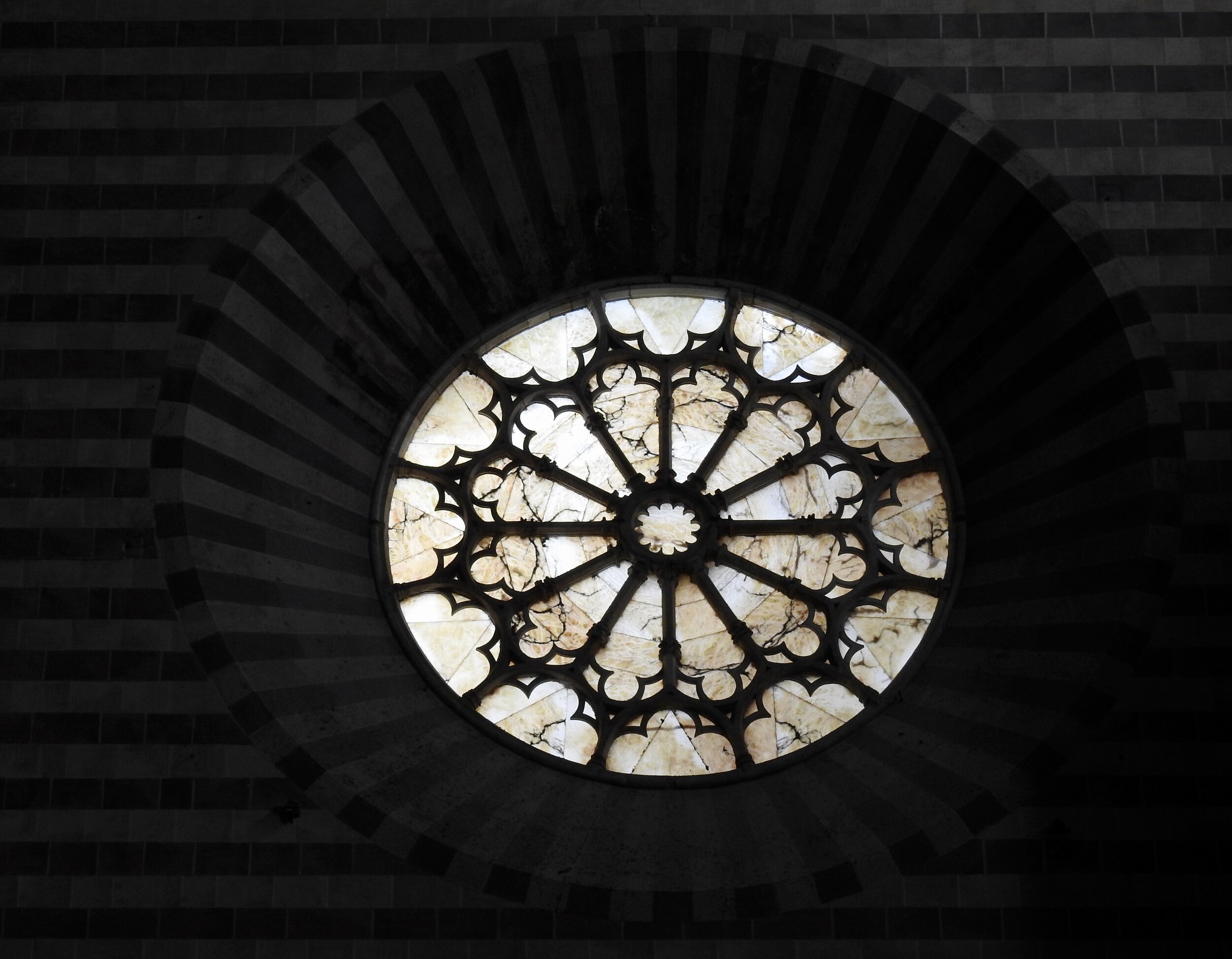
Alabaster window and striped walls of Orvieto Cathedral. Photo by Renée DeVoe Mertz.
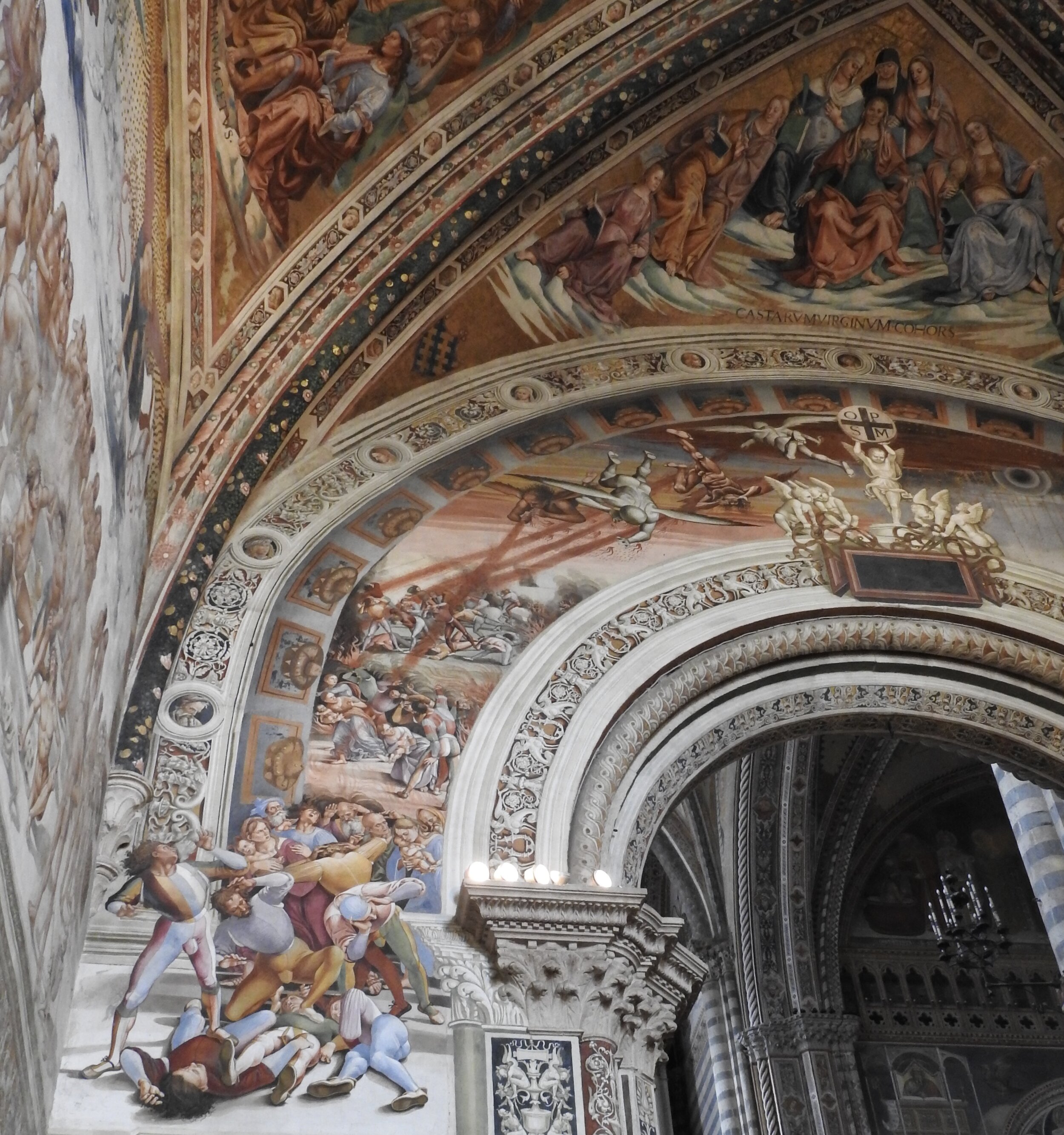
Part of Luca Signorelli’s Apocalypse (c. 1500–03) around the entrance of Cappella di San Brizio. Photo by Renée DeVoe Mertz.
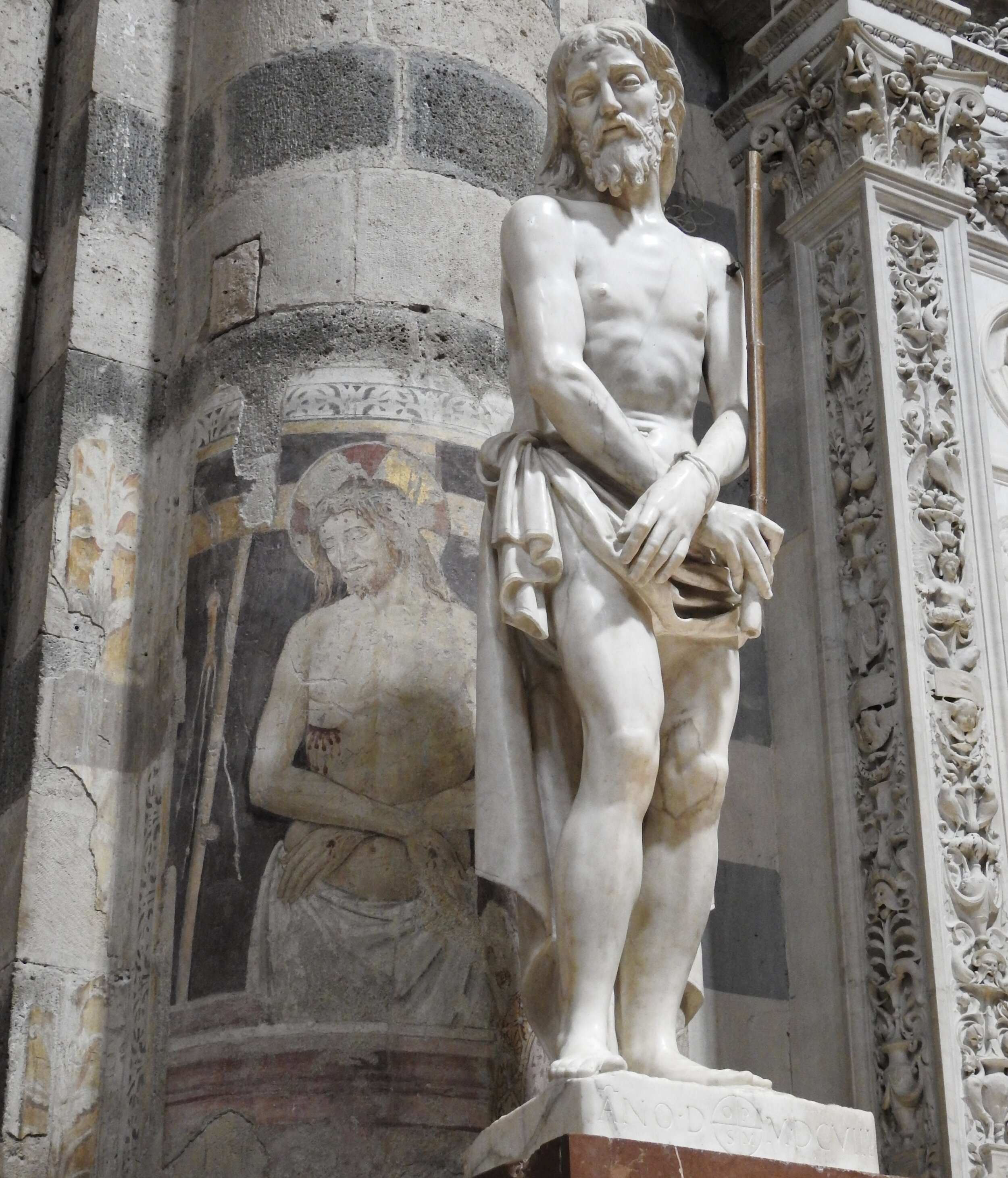
Sculpture and painting in Orvieto Cathedral. Photo by Renée DeVoe Mertz.

Right side of Luca Signorelli’s Apocalypse (c. 1500–03) in Cappella di San Brizio. Photo by Renée DeVoe Mertz.
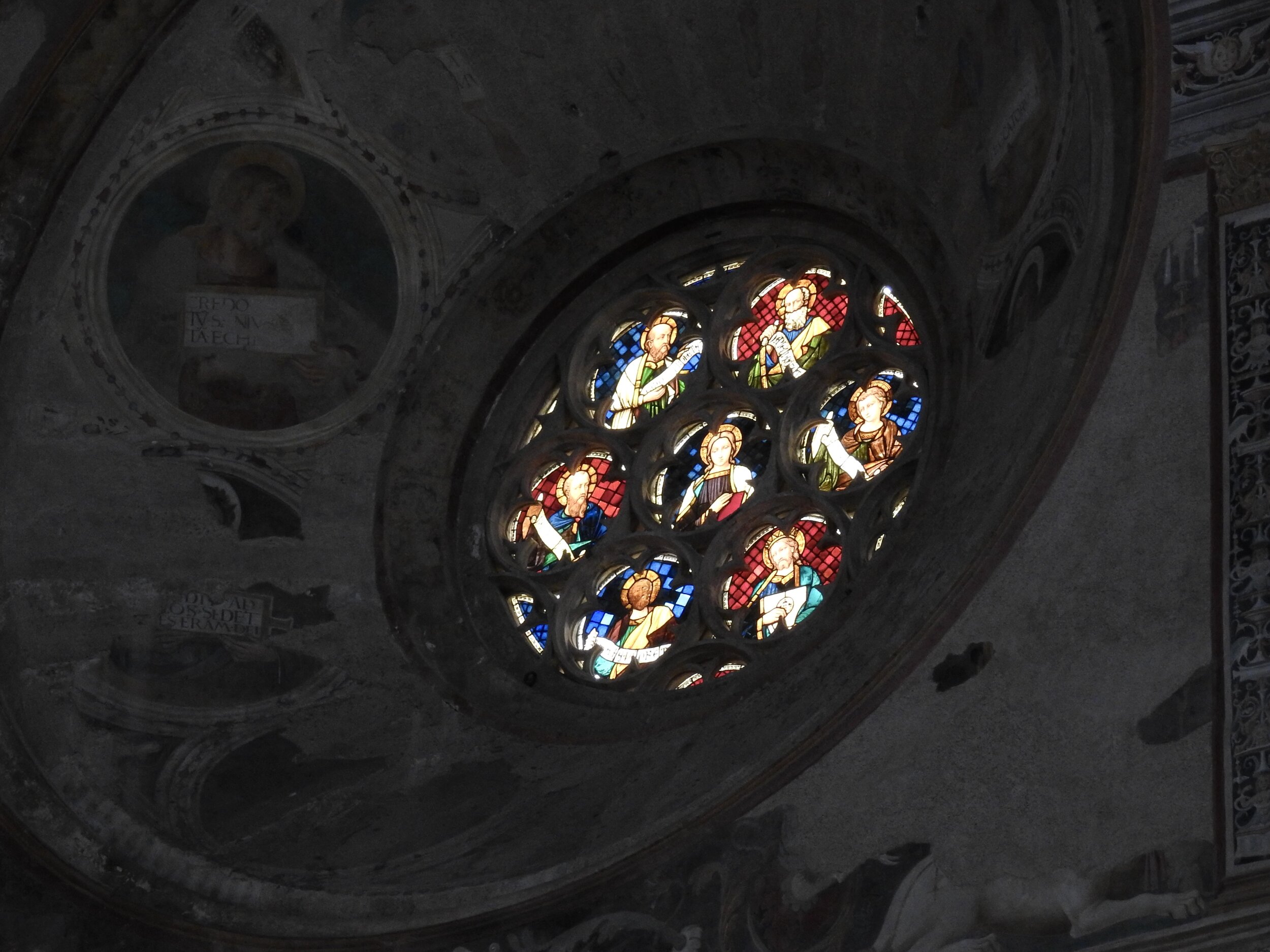
Stained glass in Orvieto Cathedral. Photo by Renée DeVoe Mertz.
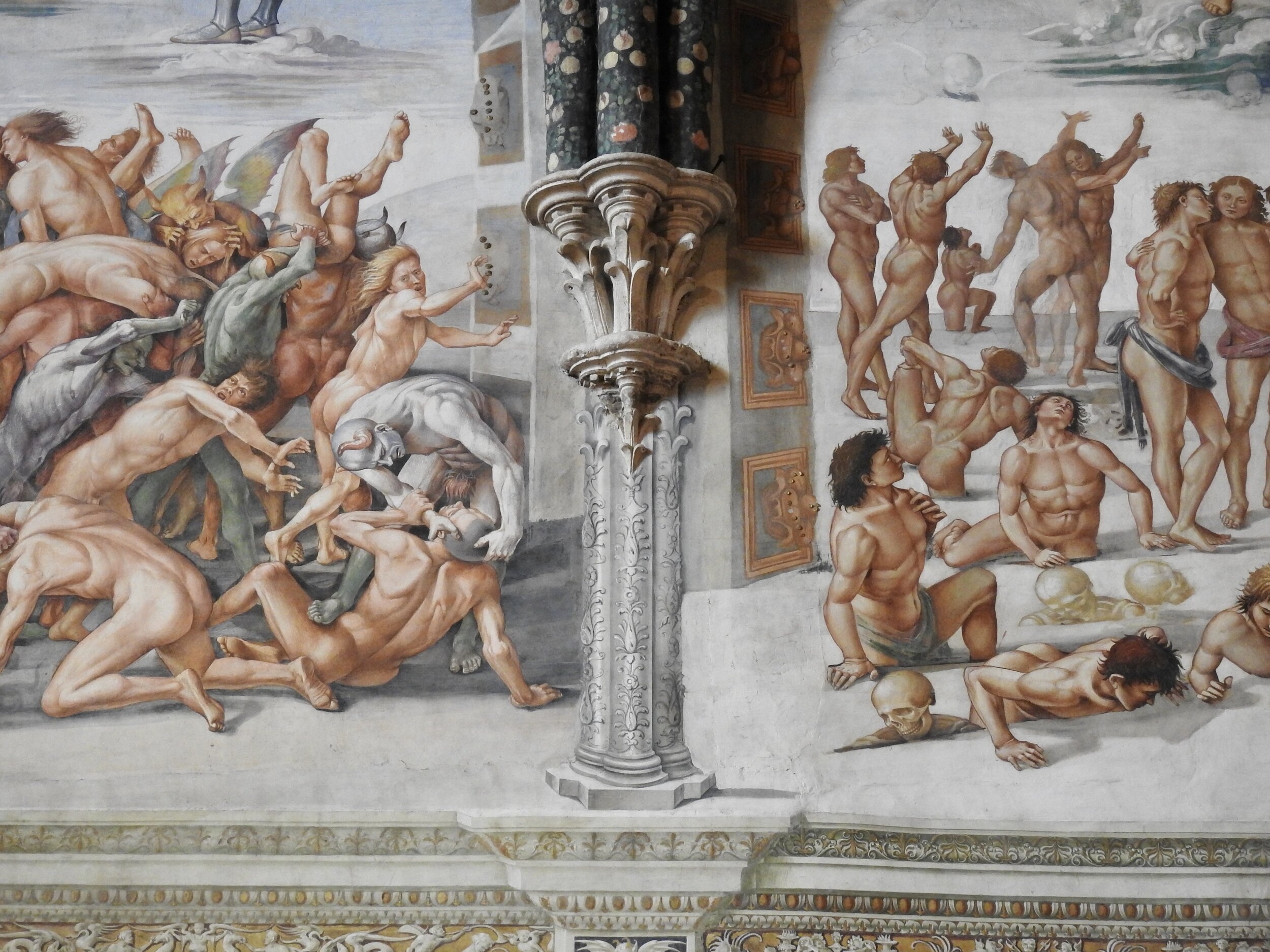
Details of Luca Signorelli’s frescos The Damned Taken to Hell and Received by Demons and The Resurrection of the Flesh, both c. 1500–03. Photo by Renée DeVoe Mertz.
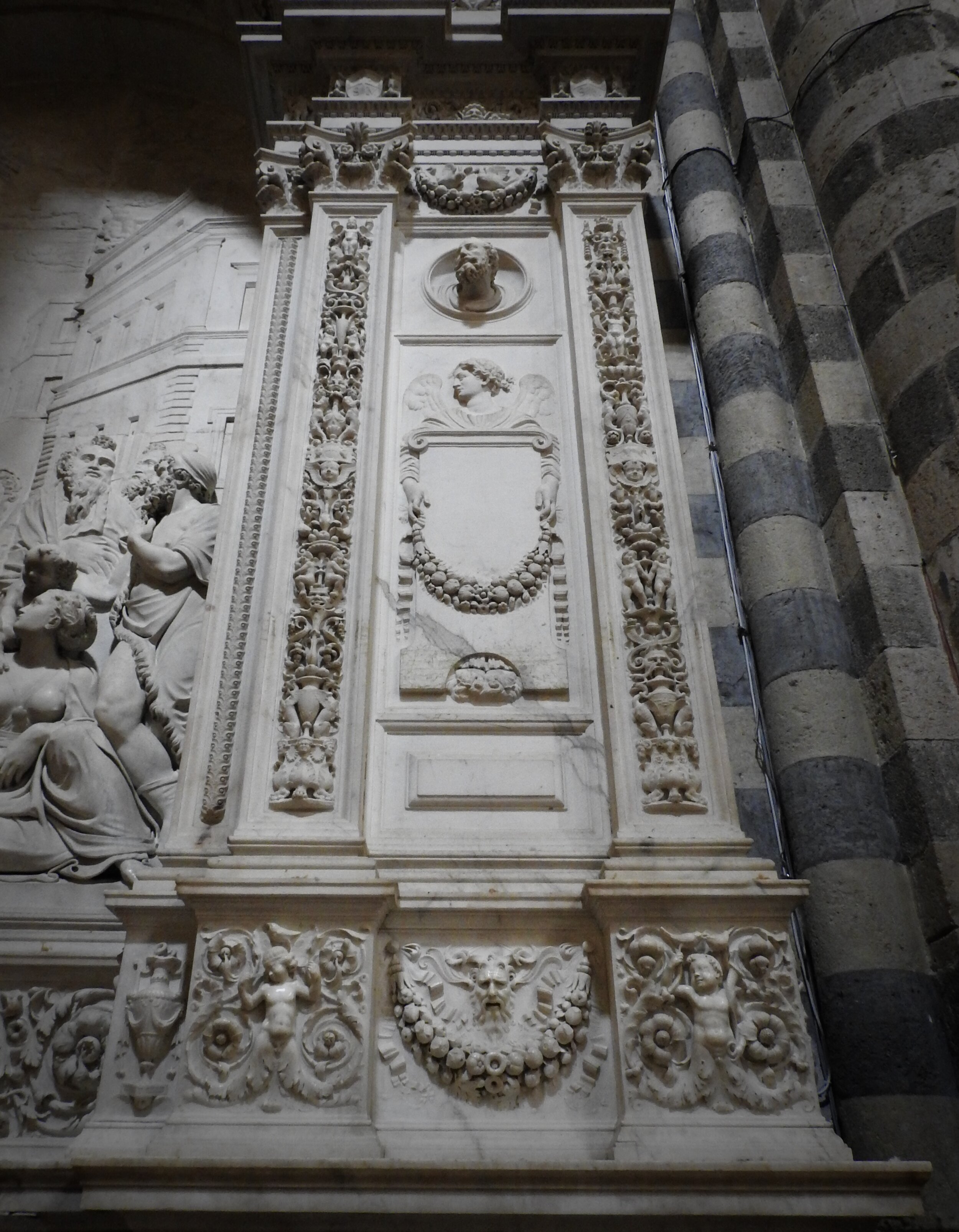
Relief sculpture in Orvieto Cathedral. Photo by Renée DeVoe Mertz.
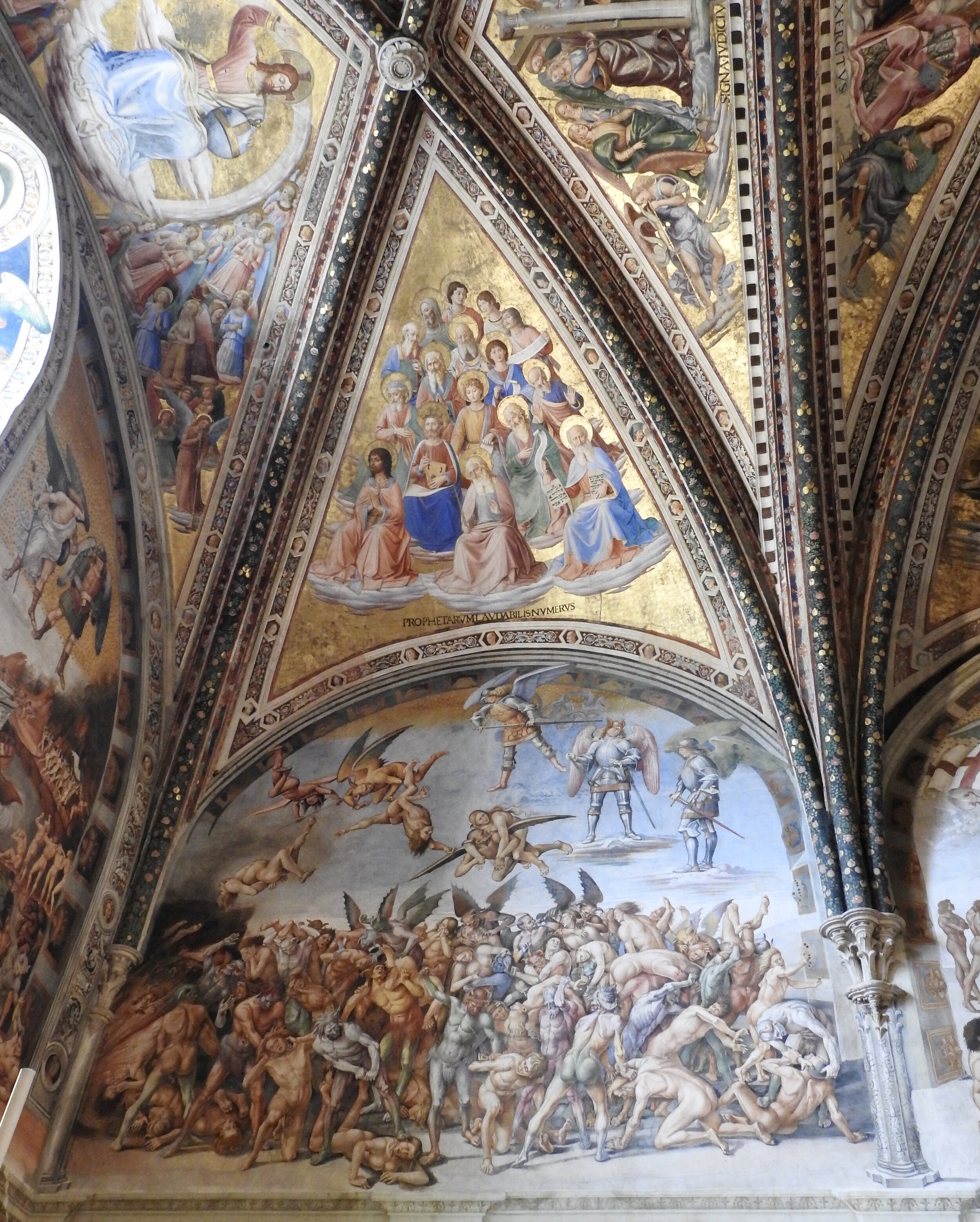
Fra Angelico’s panel of Prophets above Luca Signorelli’s The Damned Taken to Hell and Received by Demons in Cappella di San Brizio, Orvieto Cathedral. Photo by Renée DeVoe Mertz.
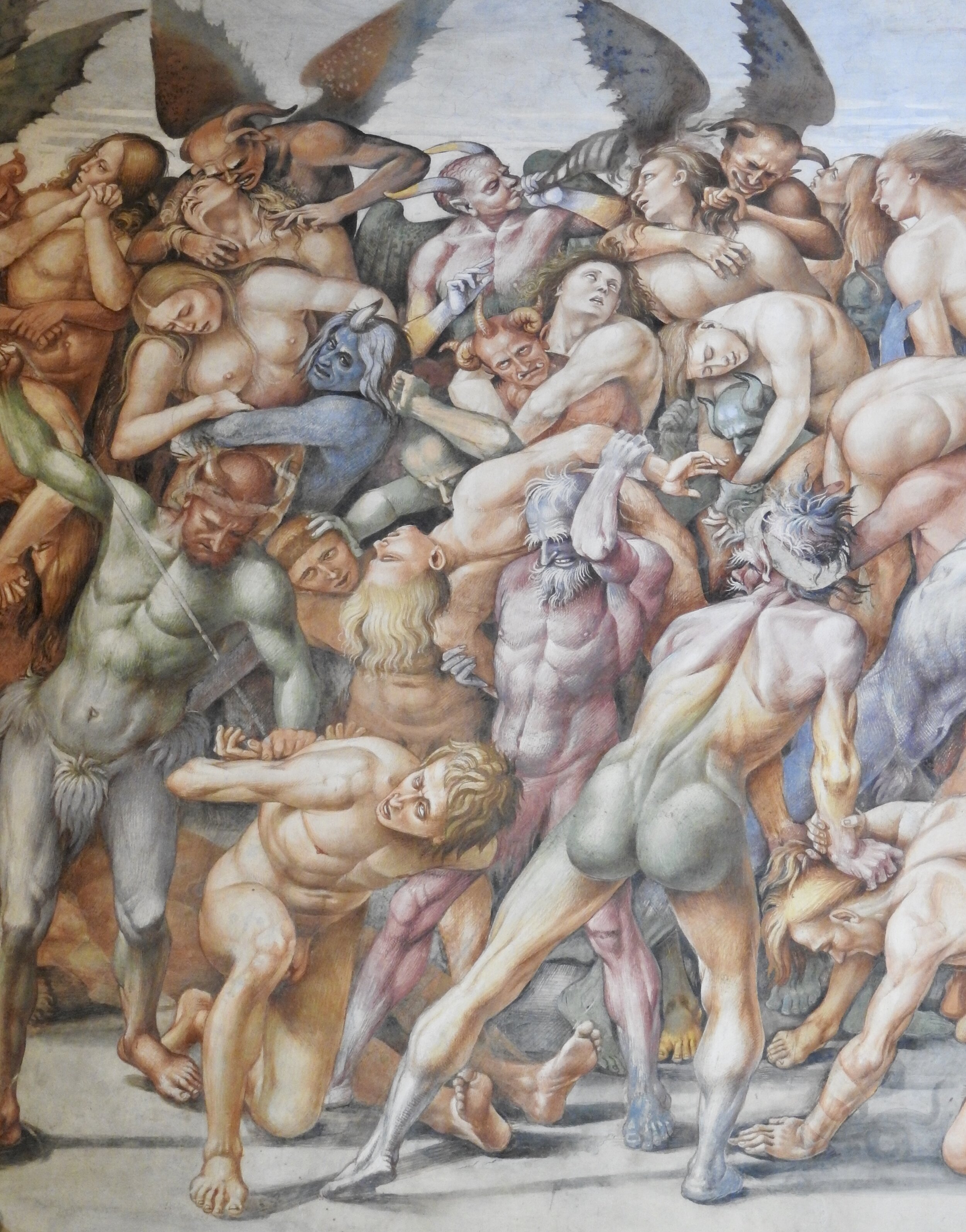
Detail of Luca Signorelli’s fresco, The Damned Taken to Hell and Received by Demons in Cappella di San Brizio. Signorelli’s muscular, dynamic figures and use of bright pastels helped inspire the forms and colors of Michelangelo’s frescoes in the Sistine Chapel, particularly his Last Judgement (1536–41). Photo by Renée DeVoe Mertz.
